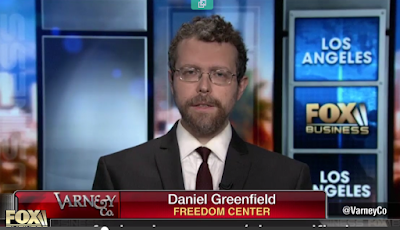Myths were once rare and exclusive things. The stories told around fires made up the soul of a culture. From the printing press to the internet, technology helped change all that. The oral became written and the written became all too easy to duplicate. Stories ceased to be communal and became personal. A written scroll was a painstaking effort, too precious to be hoarded, while a book could be one of a million copies. Everyone could have their own stories.
When communal stories became personal stories: some things were gained and others were lost. Religious stories (there is a reason that the Bible remains the quintessential bestseller), national myths and cultural lore gave way to stories of personal empowerment. The story of the group became that of the individual and ‘individualism’, absent after the fall of Greece and Rome, was reborn, first in tales and then the power shift from the collective to the individual.
Western individualism would not have existed without the underpinning of individual narratives and they would not have come into being without a printing press and books that people could read privately, instead of in groups, that increasingly came to center around the individual, not as a prototype, a set of principles or a racial hero, but as the fulfillment of individual drives.
The ‘cultural magic’ of the lore became democratized. It no longer existed only to amplify the agendas of the group, but to actualize the individual. Protagonists no longer needed to be moral or if immoral, a cautionary tale, it was enough that they satisfied someone’s desires. They could be foolish, selfish and immoral, commit adultery, lie, cheat and steal, without facing a reckoning.
The old culture wars had been between different cultures. The ascension of the Greek world led to a round of cultural wars over how much of the new Greek culture to absorb and how much of it to resist. But the new cultural wars were taking place within a culture over cultural morality. These culture wars continued for half a millennium and while there was a good deal of back and forth, they were largely marked by the slow relentless dismantling of cultural morality.
By the 19th century, culture had become an obsession that affected everything and defined society. The rate of change was accelerating and culture moved as fast as technology did. In the 20th century, culture fused with technology so that the medium became the message. Since the medium was change, the culture became about change and society had to keep changing.
With the advent of the counterculture, culture ceased to become fashion and became revelation. Not since the old Italians had treated their Renaissance sculptors, painters and tinkerers as saints had any generation become as convinced that their entertainers were really prophets, not just of beauty or ideas, but of a coming new age that would transform all of mankind.
Religion declined and culture decisively took its place. Culture offered no certainty, but in a world that seemed to be coming apart, neither did religion. While religion stifled hedonism, culture praised the liberating powers of individual impulses to bring joy and change the world. The counterculture soured into drug abuse, violence and cynicism, but the religious revivals that followed in its wake failed to shift the fundamental balance of cultural power away from it.
Cultural magic relentlessly predicted change and since change came, culture was right. The new world might not be better, but it was retroactively inevitable and so cultural magic ruled. The culture was the right side of history and if it seemed awful, that was because we were awful.
Conservatives grappled with the culture before surrendering to it. The culture wars are no longer about the role that culture should play, but what messaging the culture should be invested with. Having forgotten that the medium is the message, they believe that the message can be altered by becoming the counterculture and thus co-opting the culture the way the radicals once did.
But when the medium is change, the only cultural message that can be centered is radical change. To become a counterculture is to embody radical change and then to be changed by it.
Technology democratized culture but then collectivized it again as individual printing presses gave way to publishing monopolies and web sites to social media monopolies. Technological disruptions initially individualize only to then collectivize. Cultural change broke up old traditions through individualism and then collectivized to impose new cultural regimes.
Change created cultural magic. The rapid rate of technological and social change made culture appear disruptive and therefore prophetic. To the youth of each generation, culture appeared to be a harbinger of a new world, only to fall apart leaving behind nostalgia for its lost optimism. Each future became retrofuturistic and each utopia turned into a dystopia to be torn down again.
Our culture has become collectivist and disposable, alienating and ubiquitous, trying and failing to fill the role of religion and national mythos all the while setting out to demolish them. And social media’s mission of enlisting users into making culture has only made teenagers as depressed and dysfunctional as the ‘creators’ at the top of the cultural food chain.
Depression rates correlate with cultural saturation. The more people engage with a narcissistic feedback culture, the more unhappy they become. Like addicts, they turn to culture for validation, meaning and purpose, only to come away drained and depressed.
Cultural magic breaks up the family and replaces it with dissatisfaction, it replaces actual cultures with intellectual properties and religion with AI generated fictions on an extended payment plan. The only future it offers is the dysfunctional one that it makes out of people.
A healthy culture maintains a balance between individual drives and social values, between change and tradition, and does not confuse narratives with truth. It knows that we need to believe in more than whatever we invent ourselves. While we need to change, we also need to have touchstones that allow us to control how we change and what that change is to achieve.
Culture is magic when it conveys to us not only what we need to change, but also what to keep. Radical change destroys what exists now with the promise of making something better down the road, but the only thing that follows in the wake of its destruction is dependency on the destroyers. We have learned what it is to destroy, now we need to learn what to hold on to.
Daniel Greenfield is a Shillman Journalism Fellow at the David Horowitz Freedom Center. This article previously appeared at the Center's Front Page Magazine.
Click here to subscribe to my articles. And click here to support my work with a donation.
Thank you for reading.
Domestic Enemies: The Founding Fathers’ Fight Against the Left tells the untold story of the Left's 200-Year War against America
And readers love it.






Comments
Myths are how the wisdom of the old was passed on to the ignoramuses of the younger generations.
ReplyDeleteI was reminded of that when my old friend the wise old blue jay passed on. He had all kinds of calls he taught the young birds. Warnings about predators and such. I used to see a dozen young blue jays flying by in his wake.
Now I am lucky to see a single blue jay (scrub jay really) and he only knows a few blue jay screeches. I guess the others got caught by predators after the wise old guardian blue jay passed on.
Very profound in its attempt to map something very big .
ReplyDeleteYou excel at these seemingly harmless side winds ,that are actual hurricanes later
Like the cloud ,the size of a mans hand( 1 Kings 18:43-4)
Here in Britain, I find myself thinking of our pantomime season that is now going the way of everything else , nativities, human scale concerts etc.
Doesn't see like much, but weren't big values and communal fun and morals all possibilities with ,say Cinderella and Jack and the Beanstalk etc?
You see it bigger and better. But the devil is certainly found in reducing seemingly trite social ,but local ,gatherings; into something not worth the bother .
Witness tonights Global Fireworks displays. All the same, demonic but with an Eiffel Tower Silhouette to imply that it's French. No. It's satanic, Horus and baphomet stuff,with a P. diddy soundtrack.
Post a Comment